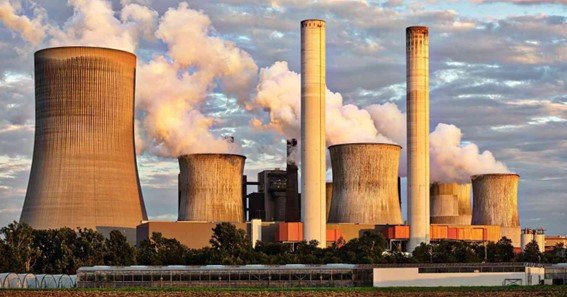Thermal pollution, particularly from power plants, is a significant yet often overlooked environmental issue. Power plants, especially those using once-through cooling systems, discharge large amounts of heated water back into rivers, lakes, and oceans after using it for cooling purposes. This sudden rise in water temperature disrupts aquatic ecosystems, impacts biodiversity, and reduces the oxygen levels in water bodies, creating a host of environmental challenges.
How Power Plants Cause Thermal Pollution
Power plants, especially coal, nuclear, and gas-fired plants, use water to cool their systems, often drawing it from nearby rivers or lakes. Once this water is heated during the cooling process, it is discharged back into the water source at a significantly higher temperature. This process raises the water’s ambient temperature, leading to what is known as thermal pollution. The temperature change is particularly harmful in ecosystems that depend on stable, cooler water temperatures for the survival of fish, plants, and microorganisms.
Effects of Thermal Pollution on Aquatic Ecosystems
- Reduction in Dissolved Oxygen Levels
Warm water holds less oxygen than cool water. This reduction in dissolved oxygen can lead to the suffocation of fish and other aquatic organisms, disrupting entire ecosystems. Lower oxygen levels also contribute to the development of anaerobic conditions, which can foster harmful bacteria. - Thermal Shock and Species Loss
Sudden temperature increases caused by discharged water can lead to thermal shock, where fish and other species accustomed to certain temperature ranges die off rapidly. Long-term exposure to warmer water can alter the local food chain, reduce biodiversity, and lead to the invasion of species more tolerant of higher temperatures.. - Alteration of Ecosystem Dynamics
Increased water temperatures can accelerate the metabolic rates of aquatic animals, forcing them to consume more food while depleting available resources more quickly. This imbalance can further stress already fragile ecosystems and lead to shifts in population dynamics.
Solutions to Mitigate Thermal Pollution from Power Plants
- Switching to Closed-Loop Cooling Systems
Many power plants can adopt closed-loop cooling systems, which significantly reduce the amount of water drawn from natural sources. These systems recycle water within the plant, releasing it at temperatures closer to ambient water conditions, which helps mitigate the impact on aquatic life.. - Cooling Towers and Ponds
Cooling towers allow plants to release heat into the atmosphere, preventing the discharge of hot water into natural water bodies. Similarly, cooling ponds use evaporation to dissipate excess heat before the water is released back into the environment. - Cogeneration
Some power plants are using cogeneration, a process that reuses waste heat for other purposes, such as heating buildings or industrial processes, thus reducing the need to discharge excess heat into the environment.
Conclusion
Thermal pollution from power plants remains an overlooked environmental threat, with serious consequences for aquatic ecosystems. By adopting advanced cooling technologies and better waste heat management, we can mitigate the harmful effects of this form of pollution and protect our water resources for future generations.
FAQ
- How do power plants contribute to thermal pollution?
Power plants discharge heated water used for cooling processes into natural water bodies, raising the temperature and disrupting ecosystems. - What are the primary environmental effects of thermal pollution?
Thermal pollution lowers dissolved oxygen levels, causes thermal shock, and reduces biodiversity in affected water bodies. - How does thermal pollution affect aquatic species?
Many aquatic species are sensitive to temperature changes and may suffer from reduced oxygen levels, disrupted food chains, or die off from thermal shock. - What solutions can reduce thermal pollution from power plants?
Solutions include switching to closed-loop cooling systems, using cooling towers or ponds, and adopting cogeneration to reuse waste heat. - Why is thermal pollution harmful to biodiversity?
Thermal pollution changes water temperatures, which disrupts the delicate balance of ecosystems, leading to species loss and altered food chains.










